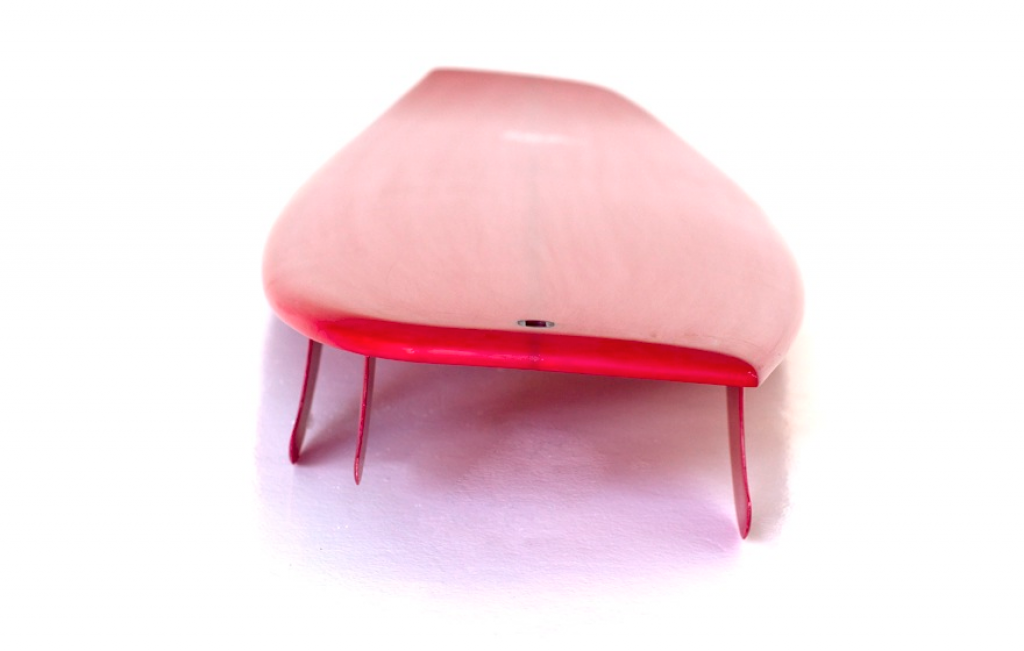 It’s possibly one of the most overlooked surfboard designs in the history of wave riding. The asymmetrical surfboard, a design theory that has its roots in the idea that a surfboard should be as easy to surf on your backside as your frontside. Why aren’t most surfers frothing at the thought of getting their hands on one these boards? Perhaps it’s because of the funny way they look or that hardly any professional surfers use them. Or maybe it’s just because most surfers haven’t used one yet. The truth is that there aren’t many of these boards out there at the moment, and you’re unlikely to see one on the rack in your local surf shop. But that doesn’t mean they’re not any good…
It’s possibly one of the most overlooked surfboard designs in the history of wave riding. The asymmetrical surfboard, a design theory that has its roots in the idea that a surfboard should be as easy to surf on your backside as your frontside. Why aren’t most surfers frothing at the thought of getting their hands on one these boards? Perhaps it’s because of the funny way they look or that hardly any professional surfers use them. Or maybe it’s just because most surfers haven’t used one yet. The truth is that there aren’t many of these boards out there at the moment, and you’re unlikely to see one on the rack in your local surf shop. But that doesn’t mean they’re not any good…
A Quiet Demise
It might come as a surprise that asymmetrical surfboard designs have been around since the sixties. They have just never really taken off in the same way that the thruster, fish or longboard has. San Diego shaper Carl Ekstrom is credited with the innovation, designing his first asymmetrical surfboard in 1965 and patenting the design shortly afterwards. Schooled by shaping legend Bob Simmons, he made the board because he wanted to surf his local break Windansea as equally well on his backside as his frontside, using just one board. A true futurist, perhaps Ekstrom’s creation was ahead of its time, because his radical design receded into obscurity over the preceding decades.
Born Again
Luckily the idea of asymmetrical surfboards wasn’t lost forever, and the past few years have seen a resurgence in shapers and surfers adopting this style of design. Shapers like Matt Biolos from Lost Surfboards, Matt Parker from Album Surfboards, and Paul Finley from Sojourner Surfboards are all creating asymmetrical sticks. One of the most vocal advocates is Ryan Burch, the 25-year-old Volcom sponsored surfer and talented shaper, who is becoming renowned for his quirky new designs and how amazingly he surfs them. Check out this video, “Bob & Sink: The Trial and Error of Ryan Burch” to see just how he rips on one of his asymmetrical boards.
Bob & Sink: The Trial and Error of Ryan Burch from www.KORDUROY.tv on Vimeo.
Why Asymmetrical?
So why should you be interested in riding one of these boards? The logic is that an asymmetrical surfboard combines two different boards, one to compliment your frontside, and one that works better on your backside. It’s easier to apply pressure when turning on your toe side because your foot naturally pivots that way, whereas it’s more difficult on your heel side. Therefore a shorter heel side rail makes it easier to turn the board. A design that seems to work well features a toe side edge that’s longer and straighter, with a single fin, and a heel side edge that’s shorter and more curved, with two shorter fins.
Your Turn
There are few good reasons why you shouldn’t try out an asymmetrical surfboard. Ok, so obviously you need a different board depending on whether you’re regular or goofy, and you might have to pay a bit more for one, especially if you visit a shaper to get one specially designed for you. It might take some getting used to, and you’ll have to put up with a few funny looks when you’ve got it under your arm on the beach. Sure, it’s unlikely that we’re going to see more surfers with an asymmetrical than symmetrical board in the near future, but who really knows… is that even really important? As Ekstrom wisely put it, “It’s best to go radical and pull back than to never go there in the first place.”